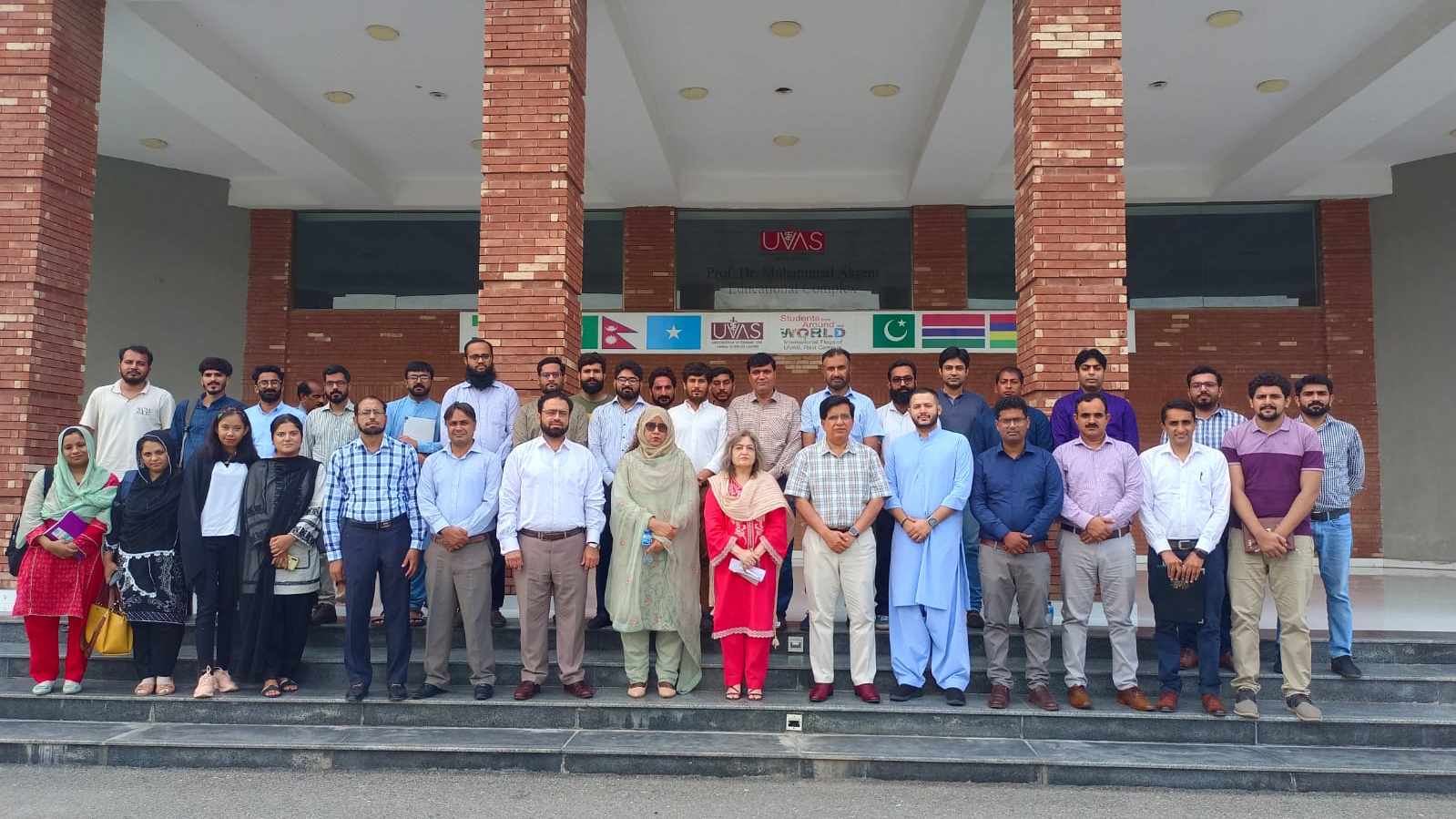LAHORE (04-08-23): The Department of Animal Nutrition of the University of Veterinary and Animal Sciences (UVAS) arranged a seminar on the utilization of Black Soldier Fly Larvae (BSFL) as an alternative and sustainable feed resource for poultry and livestock at Ravi Campus Pattoki. The seminar aimed to highlight the significance of alternative feed resources derived from food and agriculture waste and their potential impact on the national economy and food security.
University of Education Vice-Chancellor Prof Dr Talat Naseer Pasha was the chief guest of the seminar while Dean Faculty of Animal Production and Technology Prof Dr Saima, Chairman Department of Animal Nutrition Dr Naveed-ul-Haq, Dr Shafqat Nawaz Qaiserani, Representative from Al-Shafi Waste Management Arham and many faculty members, researchers and professionals were present.
Speaking on the occasion, Prof Dr Talat Naseer Pasha shared his views on the paramount importance of exploring innovative solutions to ensure food sufficiency and security. He also highlighted the potential role of BSFL in reducing dependence on traditional feed resources and enhancing the sustainability of the livestock and poultry sectors.
Associate Professor Dr Shafqat Nawaz Qaiserani spoke about the scientific evidence supporting the use of (BSFL) as a viable protein source with balanced nutritional benefits for various livestock species. He emphasized the positive impact of adopting BSFL-based feed on livestock health, growth and overall performance. Mr Arham showcased his initiative in the production of Black Soldier Fly Larvae meal and other innovative products.
At the end of seminar Prof Dr Saima presented the vote of thanks. She lauded the organizer of the seminar to arrange this seminar on informative topic and brought together experts, researchers, and industry professionals to explore sustainable solutions for the livestock and poultry sectors. All the participants of the seminar acknowledged the potential of Black Soldier Fly Larvae as an alternative feed resource and its far-reaching implications for transforming the livestock and poultry industry.





